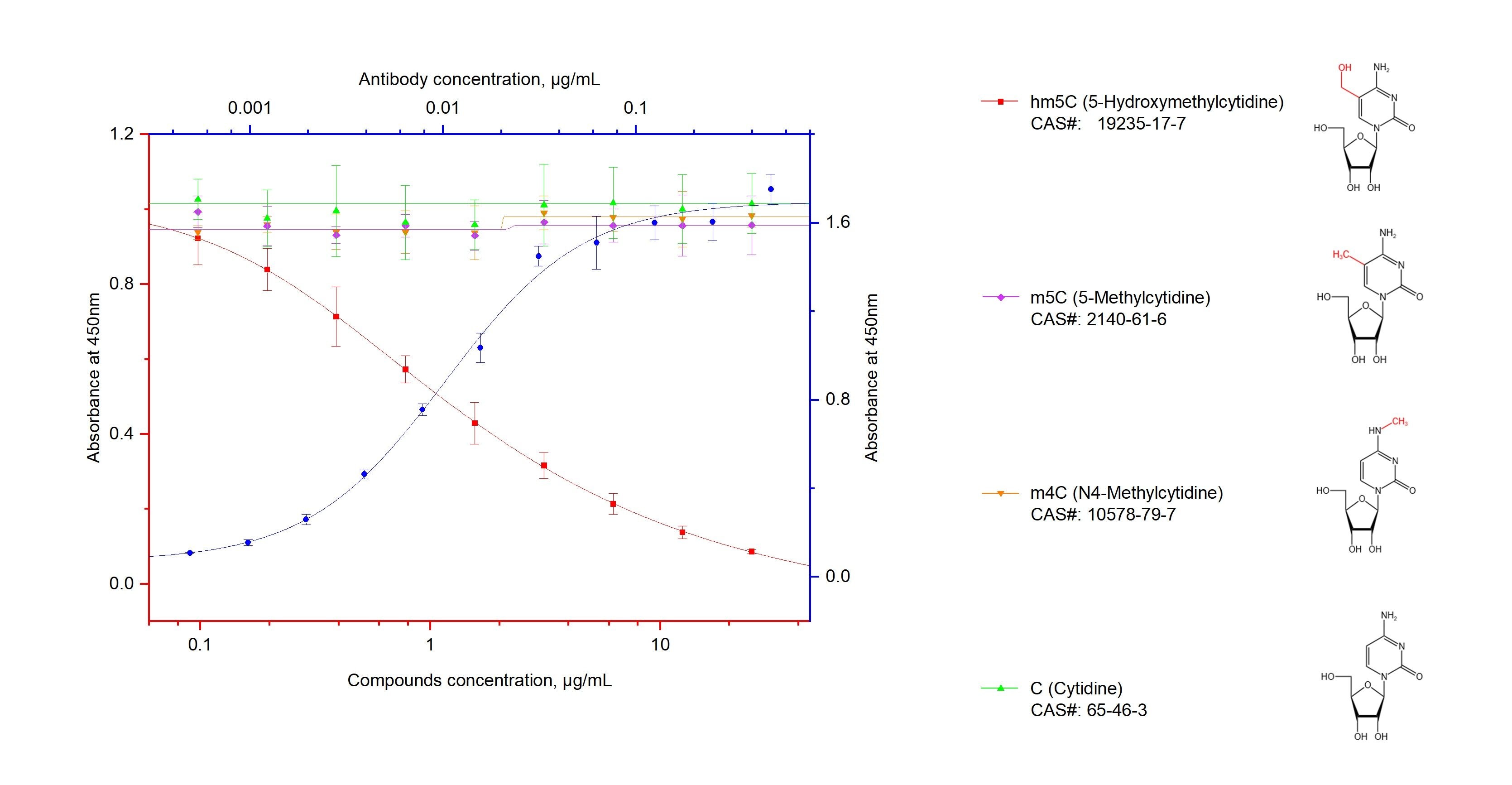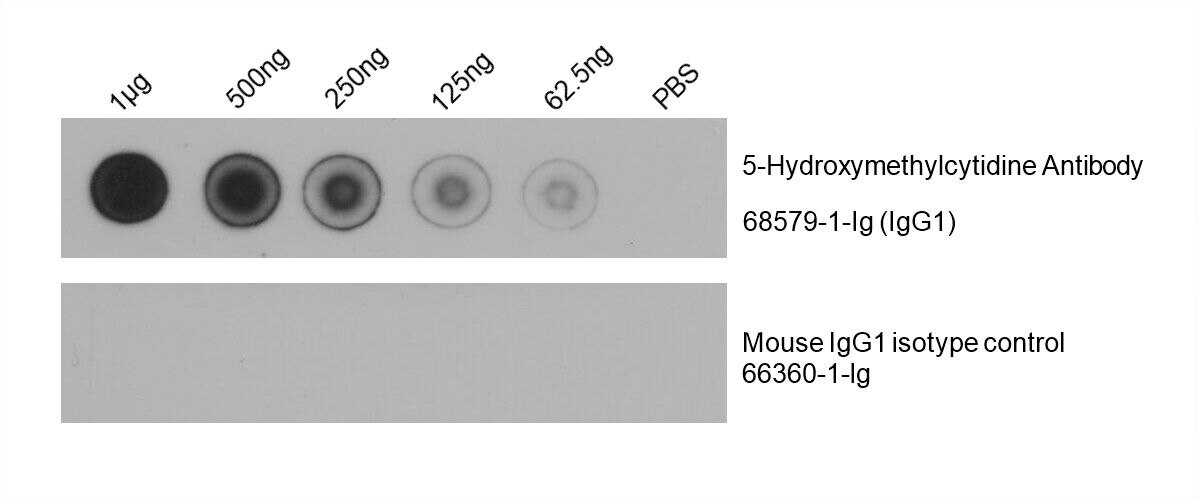5-Hydroxymethylcytidine Monoklonaler Antikörper
5-Hydroxymethylcytidine Monoklonal Antikörper für Dot Blot, ELISA
Wirt / Isotyp
Maus / IgG1
Getestete Reaktivität
chemical compound
Anwendung
Dot Blot, ELISA
Konjugation
Unkonjugiert
CloneNo.
1E6C6
Kat-Nr. : 68579-1-Ig
Synonyme
Geprüfte Anwendungen
| Erfolgreiche Detektion in ELISA | 5-Hydroxymethylcytidine |
| Erfolgreiche Detektion in Dot Blot | RNA |
Empfohlene Verdünnung
| Anwendung | Verdünnung |
|---|---|
| Enzyme-linked Immunosorbent Assay (ELISA) | ELISA : 1:2000-1:20000 |
| DOT BLOT | DOT BLOT : 1:1000-1:4000 |
| It is recommended that this reagent should be titrated in each testing system to obtain optimal results. | |
| Sample-dependent, check data in validation data gallery | |
Produktinformation
68579-1-Ig bindet in Dot Blot, ELISA 5-Hydroxymethylcytidine und zeigt Reaktivität mit chemical compound
| Getestete Reaktivität | chemical compound |
| Wirt / Isotyp | Maus / IgG1 |
| Klonalität | Monoklonal |
| Typ | Antikörper |
| Immunogen | PTG |
| Vollständiger Name | 5-Hydroxymethylcytidine |
| Gene symbol | |
| Gene ID (NCBI) | |
| Konjugation | Unkonjugiert |
| Form | Liquid |
| Reinigungsmethode | Protein-G-Reinigung |
| Lagerungspuffer | PBS with 0.02% sodium azide and 50% glycerol |
| Lagerungsbedingungen | Bei -20°C lagern. Nach dem Versand ein Jahr lang stabil Aliquotieren ist bei -20oC Lagerung nicht notwendig. 20ul Größen enthalten 0,1% BSA. |
Hintergrundinformationen
Oxidation of 5-methylcytosine in DNA by ten-eleven translocation (Tet) family of enzymes has been demonstrated to play a significant role in epigenetic regulation in mammals. Recent reaearch shows that Tet enzymes also possess the activity of catalyzing the formation of 5-hydroxymethylcytidine (5-hmrC) in RNA. It is known that RNA carries more than 100 distinct types of modifications, and these modifications modulate the structure and functions of RNA. Ribonucleoside 5-methylcytidine (m5C) is subject to oxidative processing in mammals, forming 5-hydroxymethylcytidine (hm5C) and 5-formylcytidine (f5C). Researchers have identified hm5C in total RNA from all three domains of life and in polyA-enriched RNA fractions from mammalian cells. This suggests m5C oxidation is a conserved process that could have critical regulatory functions inside cells (PMID: 25676849).
Protocol for Dot Blot:
https://www.ptglab.com/protocol/68579-1-IgDotBlot.pdf



